There are more than 3700 newly reviewed seeds in the three main grains, Liu Chunming: Why are there few breakthroughs in China in China?
Author:China News Weekly Time:2022.09.17

The breeding team with a small research group as a unit in China
It is difficult to produce a large breaking variety
Increase the protection and counterfeiting of seed rights
In order to ensure the status of the national breeding industry
The number of seeds approved by China every year is very large. However, the homogeneity is more serious, and there is still a phenomenon of "deck" sales. According to Liu Chunming, a professor at Peking University and Dean of Modern Agricultural College, there are "low -level duplication" in the domestic seed industry, and enterprises lack long -term investment enthusiasm.
At the end of the 1990s, Liu Chunming was employed by the International Botanical Center of the University of Wakhonenen University in the Netherlands. He served as the director and senior researcher of the Seed Development Laboratory. He also became the first Chinese scholar to obtain a permanent position at the University of Wakhonagen. After returning to China in 2005, he served as the director of the Institute of Craft Sciences of the Chinese Academy of Agricultural Sciences.
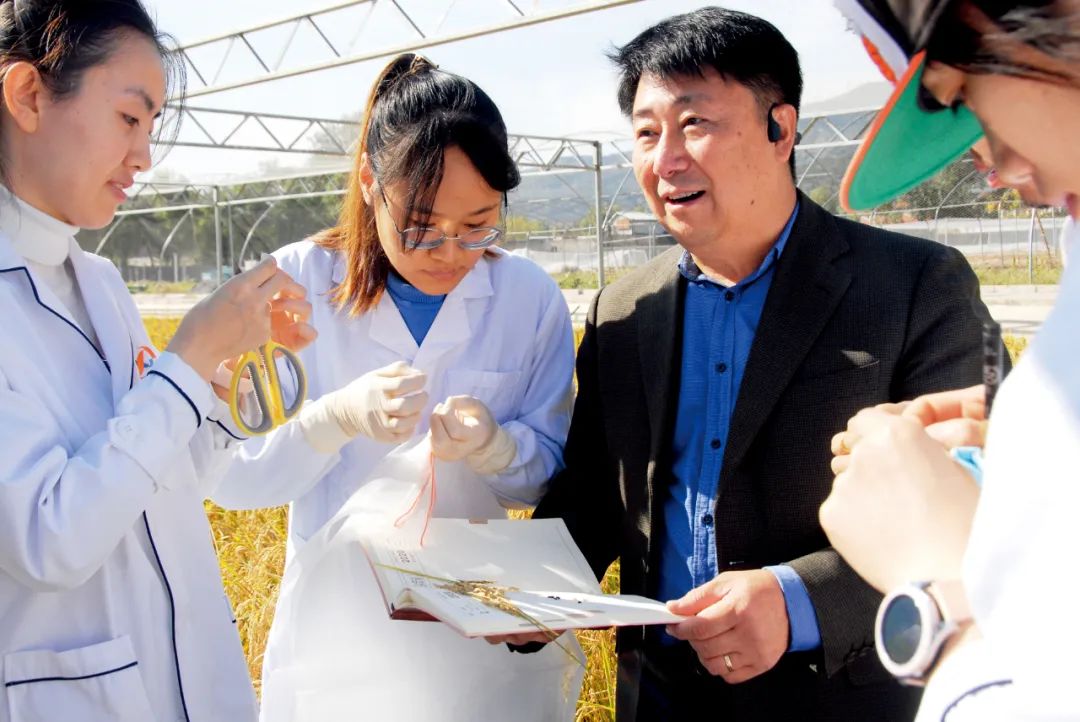
Liu Chunming and the students conducted research in the field. Photo/Interviewee provided
In 2000, China's first "Seed Law" was promulgated, and the Chinese seed industry began to market. To this day, the domestic breeding model is not the same as the commercial breeding abroad.
The Netherlands is a major exporter of the world. The land area is less than a quarter of Shandong Province, but the breeding industry has a long history and developed in the industry. In the northern Netherlands province in the northwest of the Netherlands, there are world -renowned "seed valleys", which gathers more than 40 breeding companies including the international giants including Xianzhengda and Mengshan Capital (later acquired by Bayer). The area of seeds in the region accounts for 40 % of the world's, and the annual sales of seeds exceed 2 billion euros, and exports account for 46 % of the world. Vahinen University, located in central Netherlands, is the only agricultural university in the Netherlands. Its comprehensive strength in the agricultural field has been ranked in the top two internationally.
Liu Chunming, who had worked in the two R & D models, emphasized in an interview with "China News Weekly" that modern biological breeding work requires integration and organizational innovation. In China, the breeding team with small research teams as the operating unit is "difficult to produce a large variety of good product performance due to small scale and lack of long -term stable financial support.
The more varieties, the better, the better,
Farmers should be small and fine
China News Weekly: Among the crop seeds, domestic rice and wheat seed breeding are relatively dominant, and the seeds such as corn, soybeans and some vegetable crops still have shortcomings. Why is there such a situation and what are the reasons behind it?
Liu Chunming: At present, at least 99 % of our four main grains are our own variety, and rice must be more than 95 %.
In the past few decades, the focus of breeding by the state is the main grain crops. Four main grains: wheat, corn, rice, soybeans, especially wheat and rice are key support. Several large corporate corn breeding in China is also doing well. In recent years, the country has also supported the cultivation of new soybean varieties, but due to the short time, there are still few breakthrough varieties.
Taking wheat as an example, our variety of innovation has done a better one is the Institute of Craft Sciences of the Chinese Academy of Agricultural Sciences, the Shandong Academy of Agricultural Sciences, the Henan Academy of Agricultural Sciences, and the Jiangsu Academy of Agricultural Sciences. The government supports them and cultivates some large varieties, and the output, quality and comprehensive resistance are good.
From the perspective of vegetable crops, our fields of vegetables, such as cucumber, cabbage, cabbage, chili, tomatoes, etc., there are many types of domestic independent cultivation, but high -end varieties, especially those suitable for greenhouses and greenhouses, tomatoes, green peppers, and green peppers and green peppers and green peppers and green peppers and green peppers and green peppers. Many broccoli and so on from abroad. The seeds of some colored tomatoes (also known as "Virgin Fruit") are calculated, and the price has exceeded gold. However, due to its good product, yield and disease resistance, farmers are willing to spend three or five dollars, and even more expensive to buy a grain of seeds and seedlings.
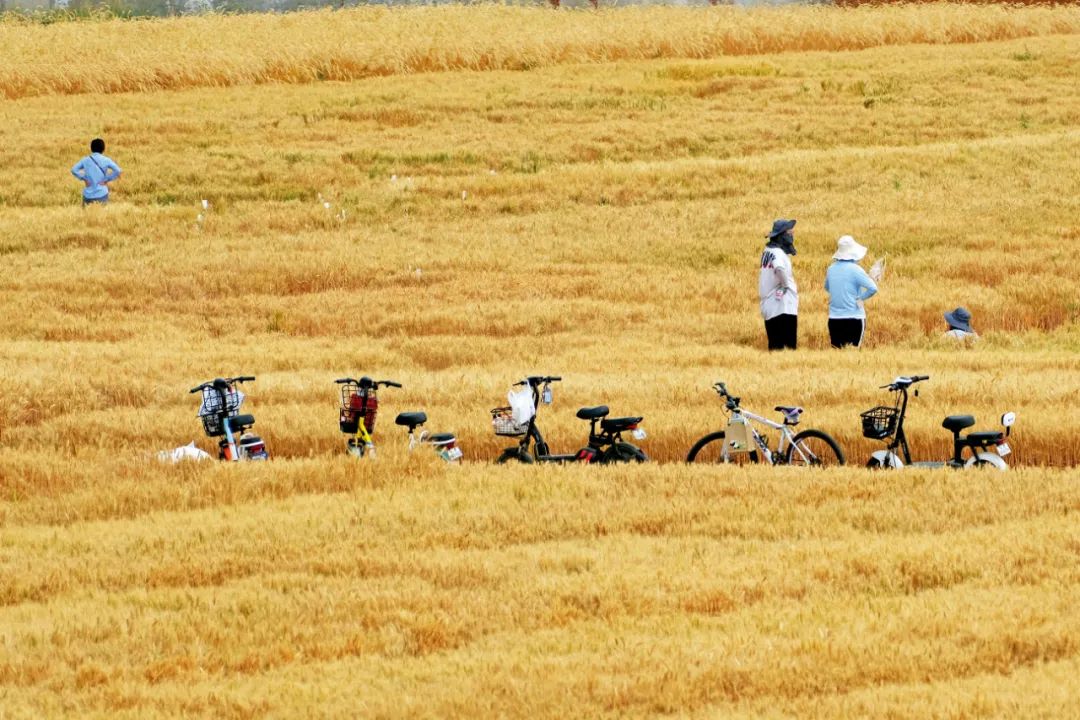
On June 7, the science science exhibition base of the Chinese Academy of Agricultural Sciences, located on the shore of Lenovo Bridge, Beijing, was conducted. Agricultural scientific research experts conducted a multi -point sampling survey of wheat and carried out wheat scientific research. Figure/Zhongxin
China News Weekly: Taking corn and soybeans as an example, the United States, Brazil and other countries have used genetically modified technology to improve the varieties of insect -resistant and herbicides, and increase output. China is currently planted with non -genetically modified corn and soybeans. Is this the most important factor restricting crop output? What are the factors that affect crop output?
Liu Chunming: The characteristics of insect resistance and herbicides have greatly played a great role in the management of farmland process management and production improvement. The cargival of insect resistance saves pesticides and human costs, which is also more beneficial to the environment and health, and the antidimental traits make weeding easier.
In fact, the large variety of innovative types consists of many elements. For example, in the plant type, our traditional corn grows very thick, the leaves are wide, the leaves are also large, and the leaves become more and more erected. The advantage is that each corn is small. Essence At the same time, stalks with dense planting varieties also need to be more tough. There are 3,500 acres of traditional corn varieties and up to 4,000 places. Today, new varieties can be planted to 5,000 to 8,000 plants. At this time, high yields may be achieved.
In addition to the level of variety, the conditions of soil fertilizer, irrigation capacity, and farmers' field management levels will affect the final output of crops.
Taking corn as an example, the overall land level in the cultivation area in China is incomparable with the United States. When I first went to the United States, I felt strange that I couldn't see a farmland for a few hours. Later, they found that their farmland was concentrated in local areas. Once I went to Ohio, I drove for a few hours and found that the two sides of the road were full of corn or soybeans. That area is very suitable for planting corn and soybean wheels. The plot is large, the land is flat, and the level of cultivation is very high. You can see rice and citrus in California. Many vegetables are planted in California. The United States is a suitable planting crop according to different land levels. The large -scale planting of the three east provinces and Xinjiang is very good. For example, in Qitai, Xinjiang, the yield of corn per mu with a scale of 10,000 acres is 1,200 kilograms, which is higher than the US output. However, in Yunnan and Guizhou, most of the lands with small land areas, it is difficult to achieve mechanization of irrigation and farmland management, and the level of output is limited. Not long ago, I went to Midu, Yunnan to investigate and found that it was difficult to see the local plot more than one acre.
The cultivation of cultivated land is good, coupled with the selection and modern planting management method of high -planting high -planting high -planting high -products, it can achieve high yield.
China News Weekly: Although there are more than 3700 seeds of the newly approved wheat, rice, and corn that have passed the approved wheat, rice and corn each year, there are very few competitive and breakthrough technologies. Still "old variety", how do you think of this phenomenon?
Liu Chunming: The more varieties are, the better. On the contrary, the less varieties, the better the big variety.
For example, corn, now every year, there are 3,000 or four thousand varieties in China to push to the market. Imagine that you are a grower, go to a seed supermarket, and face thousands of varieties on the shelves, how do you choose? Therefore, the general government will give some suggestions. For example, there will be some specifications that are recommended to be promoted by each year, and some provincial seed stations will also make recommendations. This can be relatively better. But even so, the recommended varieties are not necessarily the best.
In recent years, our overall variety production level and the level of disease resistance have not increased significantly. The annual increase is 1 % to 2 %. Essence At present, the situation with a large number of varieties and a small revolutionary variety shows a certain degree of regeneration in a certain extent.
On April 21, the national varieties of Tianfu Modern Seed Industry Park National Variety Testing Southwest Branch's laboratory in Chengdu, Sichuan, in the laboratory of the Southwest Branch of the Southwest Branch. Photo/Visual China
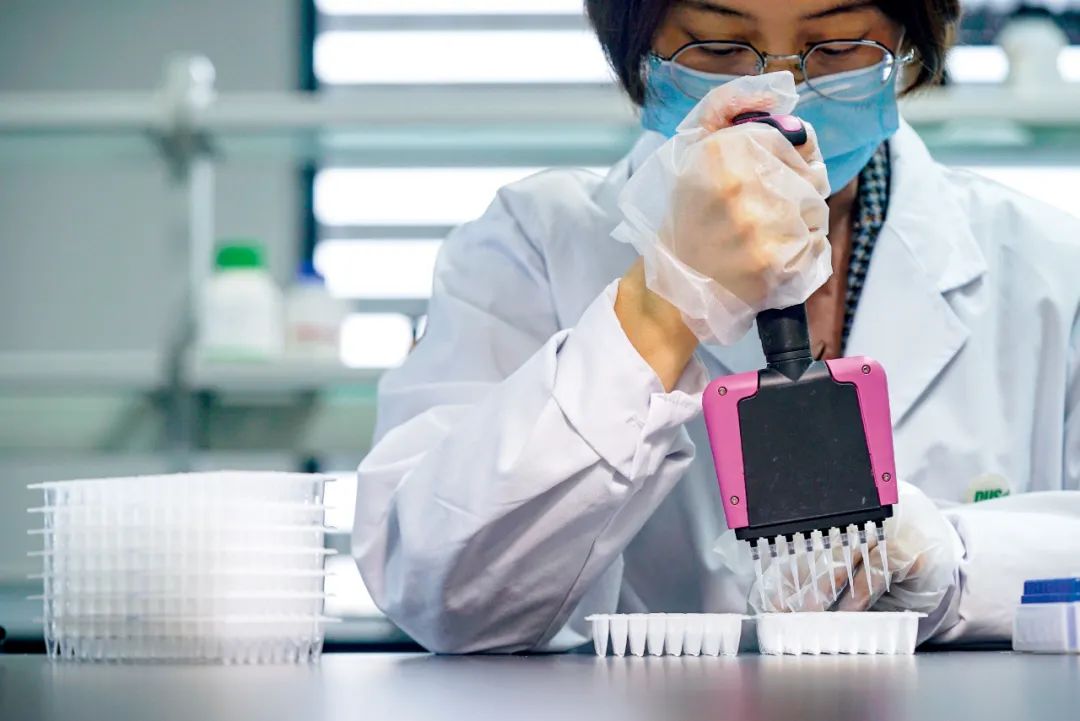
Small research group is unit
It is difficult to meet the needs of modern innovation
China News Weekly: As an agricultural country, China has established the world's largest breeding R & D team based on public welfare research units such as scientific research institutes and universities in the 1990s. What causes the variety you said "low level duplication"?
Liu Chunming: The research and development of large varieties should be based on many years of experiments and analysis, and integrates many excellent traits into a single variety in order to truly form a breakthrough variety.
Many bred scientists in China are distributed in scientific research units such as agricultural sciences and agricultural universities at all levels, but the scale of a single research group is relatively small. Some agricultural universities specializing in corn breeding are very large to have 10 to 30 people. Its main responsibility is to solve scientific issues and not be suitable for participating in breeding teams. This is the same abroad.
The small research group cannot be tested for a certain variety to 300 or 500 test fields. Even if 500 test points are achieved, the specific performance of each point and each plant is effectively collected by various characteristics data, which is also a huge challenge. Each point must be at least three or five very professional people. This data must be integrated with the data of another 499 points.
Due to the limitations of the domestic research team, the research points and interests are different, and they do not commit rivers and water, and it is difficult to do major things. This is a very important reason for our variety to do not do much.
China News Weekly: In Europe and the United States, the government's investment is mainly concentrated in basic issues and breeding technological innovation. Scientific research institutes generally do not directly participate in commercial breeding. Enterprises are the main body of variety R & D and industrialization. China is more of public institutions at the same time undertake basic research and development, new varieties cultivation, and even cultivation technology research and development, and then be promoted by enterprises. Why is this phenomenon? What problems will this different innovation mechanism bring?
Liu Chunming: There are more than 7,000 seed companies in China now. Most companies their own breeding capabilities are not strong, mainly based on complexity. There are actually fewer companies that can really be integrated with breeding. Many companies are unwilling to make long -term investment. They would rather go to some research breeding teachers from the Academy of Agricultural Sciences or universities to buy a variety, and then do seed sales promotion.
Small teams are effective for primitive innovation, and large -scale commercial breeding is still more suitable for enterprises to do. The upstream basic research is separated from the downstream breeding work, and the advantages of all aspects are used. The Netherlands has relatively successful experience.
The Netherlands industry is very strong, especially the vegetable and flower industry is very large. Many of its companies are old -fashioned family stores. In the long development, they have collected many core quality resources and created many new resources. When I was working in the Netherlands, I was in contact with a few vegetable companies, like the top five in the world in the field of vegetable seeds, and the Rickson Seedlings Group Corporation worked closely with universities and scientific research units in basic research. In terms of breeding, there is a very strong goal orientation. The salary of a breeder is very high. He can command many people to assist him to participate in multi -point and multi -places to collect data, and then summarize to see which variety is the most market competitive. China News Weekly: The University of Wakhonagen, which you once worked, has close cooperation with the world -famous "seed valley" in the Netherlands. The Chairman of the Research Facilitar Sharing Committee of the University of Wakhonen has said that the success of "'Seed Valley" benefits from the unique scientific research system of the Netherlands, effective public and private cooperation and efficient results. "Can it be specific? Introduce the relevant experience?
Liu Chunming: I worked at the Hybrid Breeding Research Institute under the Dutch Ministry of Agriculture, and the Institute affiliated to the University of Wakhonagen. In the Netherlands, the government does not allow us to do breeding directly, and we need to do things that we cannot do, such as those research on the relative period, high technical requirements, or some major traits. Like a late epidemic disease is a biggest disease of potato. This kind of anti -late disease gene cloning is a major issue related to public and commercial interests. It requires scientific research units and universities to participate.
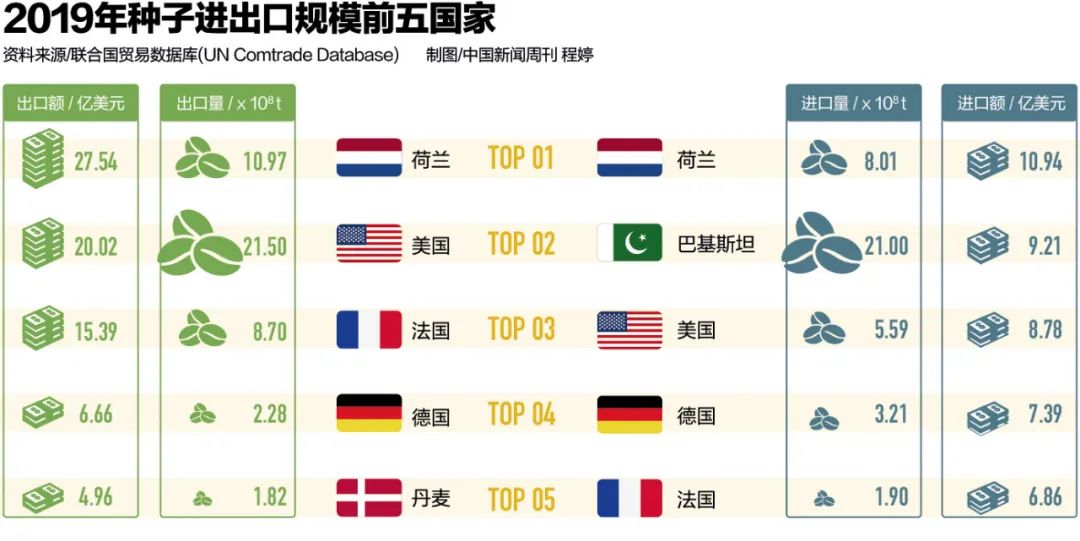
Similar industries think that it is very important. The related industries of the Netherlands will collect opinions from the company, and then lobby government to launch project support. The government pays a considerable proportion of funds, interested companies pay the remaining supporting funds, and then make the most capable scientific research team through competition or commissioning.
During the research and development process, the participating companies will pay great attention to progress and research direction. The seed industry is not very concerned about the publication of the paper, and they value the practical value and patent protection of the research results. If researchers only rely on the project to publish a bunch of irrelevant papers, companies can stop the project at any time.
Enterprises protect varieties through variety rights, protect some importance through patents, and use this to build an industry position. Each company in the Netherlands is very concerned about its "IP Position (patent status)". They think that "card neck" is actually the card's IP Position. Without enough patent status, they will be subject to people and they will eat lawsuits.
Such a cooperation mechanism has not been formed well in China. In the final analysis, it is the part that an enterprise can do. The scientific research institute should do a good job of the scientific research institute, and the government provides the support that it should provide. Only by effective functional division can we make the state's financial investment more efficient in breeding and benefit enterprises from it.
Increase the protection of seed rights to ensure the status of the seed industry
China News Weekly: One of the important reasons that China failed to stimulate market vitality and corporate innovation ability in the field of seed industry is that the infringement is serious, the corporate profits are insufficient, and it is difficult to maintain research and development. Why does this situation appear? What can the new "Seed Law" play a role in solving these problems?
Liu Chunming: When I work in the Netherlands, if a company wants to use the patented technology of our scientific research institute, I need to dock with the scientific research institute. I need to bargain and buy the right to use. Generally speaking, enterprises will buy the right to use when the patent is relatively early and the market price is not very expensive. Enterprises are also willing to pay for the innovation research of scientific research institutes, and then apply for patents together. In this way, the company has many patented combinations in hand, and will occupy many initiative in later patent transactions. If the enterprise does not purchase the right to use in advance, secretly uses the variety or patent of others, and the lawsuit will be entangled later.
The protection of domestic species of intellectual property rights is not good enough, and the "counterfeit" and "deck" in the seed industry are serious. At present, our "Seed Law" allows farmers to leave or even exchange. Realing for planting has certain benefits to ensure the basic right to use farmers. However, there are many types of large fields and cooperatives who have species, and different farmers and cooperatives can exchange seeds. In this way, the interests of breeders and breeding enterprises will be damaged, and no enterprises are willing to do long -term new varieties. This is a big problem.
At present, there are not many profitability in Chinese breeding enterprises, and the protection of varieties is not enough for one of the reasons. In my opinion, the protection and counterfeiting must be strong. Only in this way, breeders and enterprises are willing to spend a lot of money and develop large varieties for a long time, and enterprises can become bigger and stronger, and the country's breeding status is guaranteed. Otherwise, a breeder spent two or three decades develop a variety, and was taken away from the ground the next day. On the third day, he started selling seeds. Where is the motivation of breeding companies? In foreign countries, the seed company does not dare to steal the seeds of others easily.
China News Weekly: A statement often mentioned in the industry is that foreign countries have entered the 4.0 stage of intelligent breeding 4.0 in biotechnology, artificial intelligence, and big data. China is in the 2.0 stage based on genetic breeding, and The transition of biotechnology breeding 3.0. How to understand China's performance in the latest breeding technology level?
Liu Chunming: In fact, in the past two or three years, under the support of many projects of the Ministry of Science and Technology and the Ministry of Agriculture and Rural Affairs, we have studied the basic research of crop science, especially some genomics, important gene cloning, and genetic function research. At the forefront, how these basic work results are effective in breeders, there is another process. At present, a considerable part of the breeders in China have combined traditional breeding with molecular labeling assisted breeding, but there are many traditional breeders who have worked in the fields all year round. No matter how many genes they do, they can't use it, so cooperation has become very important.
Sanlian Village, a house of a house in Sanlian Village, in solemn murals of a house in Sanlian Village. Photo/Visual China
Limited patent can lead to "stuck neck"
Increasing production is the first demand
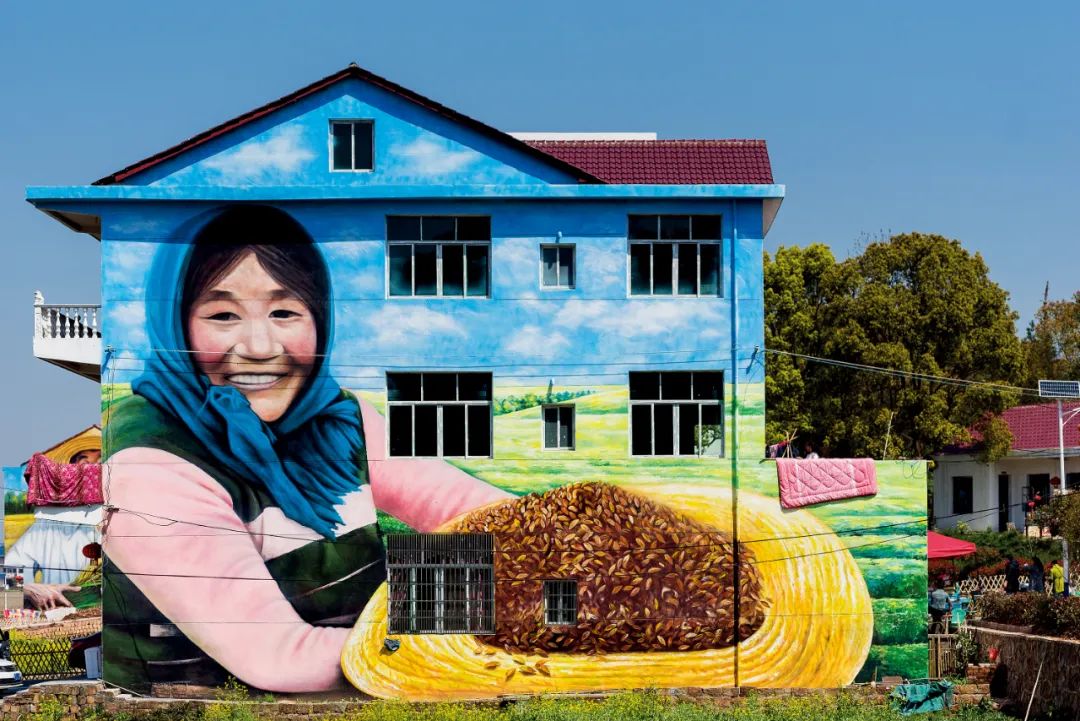
China News Weekly: In terms of new technologies such as genetically modified technology, gene editing technology, and synthetic biotechnology, what is the core patent situation of China and advanced countries?
Liu Chunming: Technically, we will be limited in a certain period of time. For example, genetically modified and gene editing, many core technology patents are in the hands of some large companies. In 2018, the American breeding giant Monsanto, which was acquired by Bayer, has many core genes and technical patents. Although the patent protection period is basically about 20 years, everyone can use it after the protection period, but these companies will continue to find new properties and new genes and new genes. , New technologies, constantly accumulate advantages.
One of the simplest examples, many patents of key traits such as corn are dry and densely plant, and many patents are not in our own hands. You can buy the seeds of foreign companies from the market, and use it as a pro -border, and introduce key traits into my variety. This is okay. But if this trait and its genes themselves are protected by patents, it will be beaten by lawsuits at that time, which is a "stuck neck" in the Chinese breeding industry. Chinese scientific researchers and enterprises must have awareness of patent protection, apply for protection for some key genes, key traits, and key varieties. They must also obtain the right to use in advance using other people's genes or technologies, so as to have independent property rights.
Many of the core characters contained in the breed of the breeding industry are placed in two hybrid pro -pro -pro -pro -pro -pro -pro -pro -pro -pro -pro -pro -pro -pro -pro -proof, and the seeds sold are hybrids produced by two parental pollinations. Many of the small tomatoes we eat and buy foreign varieties directly. Each tomato grows very standard and consistent, and the shape is also beautiful. However, the size and color of the tomatoes that are planted with seeds are different, and many other hybrid loves will be displayed. Seed industry companies protect the rights of varieties through sales of hybridization, as well as the relatively large domestic breeding companies such as Longping Hi -Tech and Denghai Seed Industry.
China News Weekly: Gender resources are the most important materials for breeding. The Chinese Academy of Agricultural Sciences and the Agricultural Sciences of various provinces have their own resource libraries. What is the use of the use and precise appraisal of the germplasm resource library?
Liu Chunming: The largest crop quality library in China is the National Agricultural Works Genomic Resource Library of the Institute of Crop Science of the Chinese Academy of Agricultural Sciences. This library was built in 1987. I participated in the construction of the new database during the Department of Work, and the new library was about 30,000 square meters. This library collects more than 300 kinds of crops such as grain crops, fiber crops, oil crops, and vegetable crops, with a total of more than 500,000 species of species resources, which is the world's second largest germplasm resource library.
The appraisal of resources is closely related to breeding, and the identification and genes are urgently demand for breeding. It is very important to accurately appraisal the quality of germplasm resources and open up and use it.
China News Weekly: People have more diversified demand for food, and climate change have also brought more challenges to the anti -reverse nature of crops. In order to cope with these new challenges, what should the development direction of the future industry industry be?
Liu Chunming: The development of the seed industry is always the first. The production of our main grain crops is still large. It is always a preferred demand to ensure that it is not hungry. To achieve high yield and stable production, new varieties must bring the importance of broad -spectrum resistance, resistance, anti -inverted, and emerald germination.
After yield, the quality traits are. The quality traits include three categories, one is the appearance quality, the other is the taste quality, and the other is nutritional quality. I have improved the nutritional quality of rice myself, and I have been doing this aspect after returning to China. The most nutritious rice is the outer vertical layer, and the vitamin trace elements are inside. But all the rice breed layer we eat daily is a layer of cells. We spent seven or eight years to cultivate a flour layer thickened new species of quality resources. On this basis, it took seven or eight years to cultivate a high -nutrition purple rice variety. 5 ~ 10 times.
Brexies must walk in front of consumers, and they cannot say that there are market demand before they can do it. As far as public nutrition improvement is concerned, in order to allow everyone to establish a healthy and nutritious eating concept, there is no enough popular science and public education, and no matter how good the variety is, it will not be able to reach the public dining table.
Send 2022.9.19 Total Issue 1061 "China News Weekly" magazine
Magazine title: Interview with Liu Chunming: Why do there be few breakthroughs in the Chinese seed industry?
Reporter: [email protected])
Edit: Du Wei
Operation editor: Xiao Ran
- END -
Market decoding 丨 The three major indexes of A shares have risen collectively, and the daily limit of Sichuan stocks
Chuanguan News reporter Tian YanIn contrast to yesterday's slump, today's A -share rebounded strongly. As of the close, the Shanghai Index reported 3281.67 points, an increase of 1.6%; the Shenzhen Ce...
Special attention | The world's first ship equipped with two sails is coming!

A few days ago, the merchant ship Mitsui announced the signing of a new ship const...